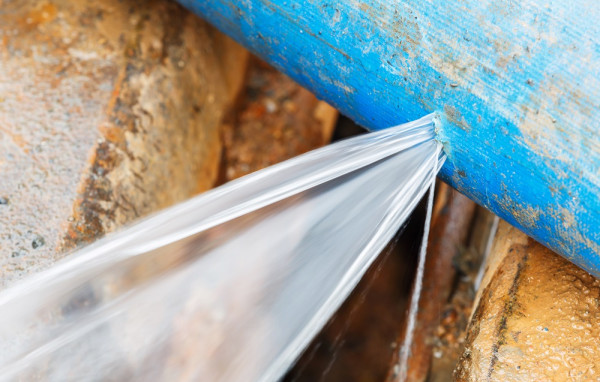How To Deal With A Leaky Pipe

Leaky pipes are problems most houses have had to deal with. It’s one of the most common plumbing problems in many households. As minor as leaky pipes may sound, they could result in a great deal of damage to your furniture and cause the growth of mildew or foul smell. Hence, they have to be handled promptly. It’s not so easy, though. A major challenge is discovering where the leak is coming from. From there, you can proceed to fix it yourself or call on a plumber, depending on the severity. Luckily, this post talks about how to deal with a leaky pipe. Keep on reading to learn more.
- Shut Off All Water Supply: This is the first step in dealing with leaks. This helps to prevent more water flow that could dampen everywhere, wastewater, or even enlarge the leak. The first area you should target is your main water supply. Turn it off to stop the flow of water into the home. When this is done, you’re sure that no more water is coming inside. You have to deal with the water already trapped within the pipes. This is necessary to fix leaking water pipes.
- Drain The Pipes: The next step is to drain the already filled pipes. You do this by turning on the faucets, allowing the water within the pipes to come out. You’d effectively do this by starting with the lowest faucets, including the sink. Depending on the type of pipe, you may need special tools to help with this, like an air compressor or applying gravity.

The main aim is to get water off all the pipes. Since you have shut off the main water supply, no new water is coming into the home through the pipes. This would even help to reduce the pressure of water flow from the leak. Water leaks can affect your flooring and furniture, so you must act fast.
- Dry The Leaking Pipe: It’s often difficult to fix a wet pipe. After draining all the water from the pipe, it’s important to clean them with a cloth to ensure that the pipe is well dried. After cleaning, ensure you allow the pipe to air dry before you start fixing the leak.
- Seal The Pipe: Now, you’re ready to begin the actual process of sealing up the leak. This usually involves the use of a sealant. Ensure you’re well protected by putting on nitrile gloves as some sealants could inflict pain on bare hands. The most common sealant used is epoxy putty. This is often used by rolling the epoxy between your fingers as you knead the dough. You can wrap it around the leaky area when rolled into a ball.
Think about how a bandage is rolled around a wounded leg. This must be made very thickly for it to perform its function effectively. Use tape to hold the edges of the putty firmly so that water would have no space to pass through. You can use the epoxy putty for leakages in the joints and on straight pipes.
- Leave To Dry: Don’t try to turn on your water flow until the epoxy putty on your pipe is well dried. This takes just about 5-10 minutes. After drying up, it’s advised that you add another layer of protection around the leak to ensure there is no space for water. The extra layer could include a rubber hose of about two inches. Wrap the hose around the dried epoxy where the leak is, and hold it firmly with a metal hose clamp.
- Another Extra Layer: When fixing leaks, you can never be too extra. Water can pass through the tiniest spaces, so you should ensure to block every possible passage. This is why you should put another waterproof tape around the whole area. Don’t forget that glues and seals don’t work well in wet areas, so ensure that the entire surface is dry. Wrap the waterproof tape around the leak in many layers until you feel it firm enough. This might look funny, but it’s an effective temporary solution to the leak in your pipe.
- Test The Strength Of Your Work: Every work done will be tested. It’s now time to see if the above steps have worked for the leak in your pipe. Turn on the water supply in your home. Allow water to run through the pipes for a few minutes. Check very carefully to see if there’s any leaking present.
Conclusion
Note that these are only temporary steps to fix a leaky pipe. You can do this while you wait for your plumber to check what the problem is. Even if the leak has stopped, you should still seek the services of a professional to check what caused the problem and prevent possible reoccurrence.
